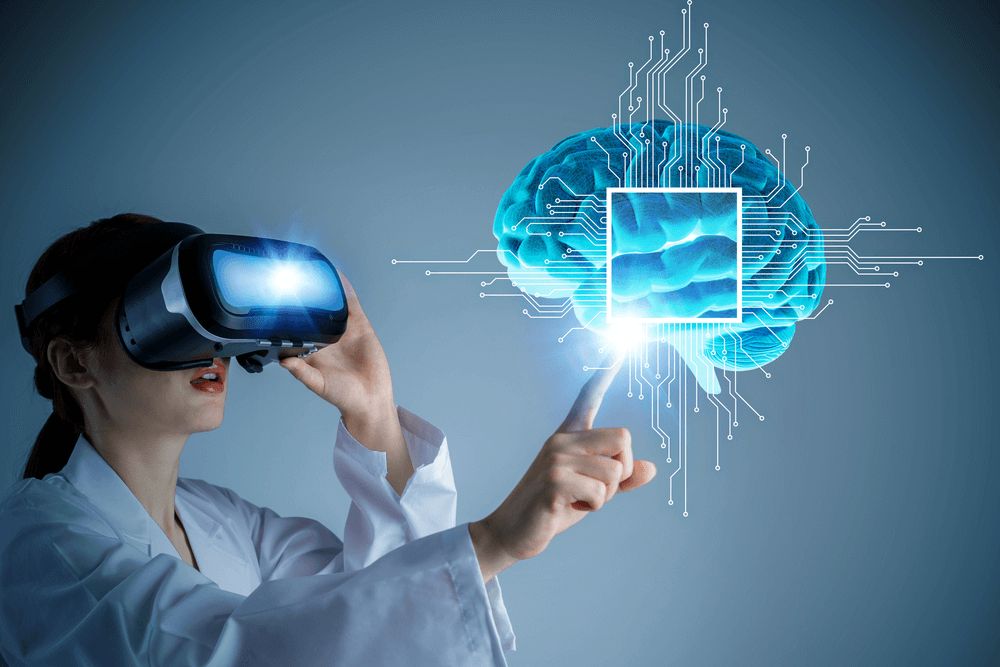Media medical imaging produces vast troves of scans like X-rays, MRIs, and CTs during diagnosis and treatment.
AI technologies like deep learning and computer vision can automate the analysis of these images to uncover insights.
This article explores practical techniques to implement AI that enhance medical image analysis.
We’ll examine real-world examples of augmenting workflows through anomaly detection, quality checks, accelerated processing and more.
The Potential of AI for Medical Imaging
Medical imaging analysis involves specialists painstakingly examining visuals for abnormalities and other clinical findings. This process is time-consuming, costly, and prone to human error from fatigue.
Emerging AI capabilities like machine learning and computer vision can automate parts of analysis to increase efficiency and accuracy. For example:
- Flagging anomalies on scans doctors should prioritize reviewing first.
- Checking image quality and suggesting retakes if defective.
- Accelerating quantifiable measurements through automation.
- Extracting 3D models from scans for precise surgical planning.
When thoughtfully implemented, such AI techniques don’t replace physicians, but augment their abilities.
Anomaly Detection for Surface Analysis
Detecting abnormalities and lesions is a prime use case for AI assistance. For example:
- Train deep learning models on labeled normal/abnormal medical imagery.
- Analyze new scans for surface anomalies the network identifies based on its training.
- Flag the highest outlier regions the model deems potentially concerning for radiologist review.
This focuses specialist time only on the most critical areas instead of inspecting every slice thoroughly.
Image Quality Checking to Reduce Defects
Another assistance workflow analyzes quality before analysis:
- Build a classifier model to identify good vs. defective scan images.
- Check incoming scans and reject those with motion blur or artifacts.
- Request patient repeats any defective scans before radiologist review.
This reduces wasted time analyzing flawed images that later require rework.
Accelerating Quantifiable Measurement
Certain measurements are ideally suited for AI automation:
- Train a model to accurately segment organ boundaries and lesions.
- Programmatically calculate volumes, distances, and other metrics from the segmentation.
- Output consolidated measurable findings to the physician.
Automating quantification improves speed and consistency over manual approaches.
Generating 3D Models from Image Series
Complex cases like surgery often rely on 3D understanding of patient anatomy. AI can reconstruct:
- Feed CT or MRI scan series into an AI model.
- Output a detailed 3D model of the patient’s anatomy.
- Allow virtual flythroughs and measurements to plan procedures.
3D visualization improves spatial understanding and outcomes.

Challenges to Responsible Implementation
To instill confidence in AI-assisted analysis, consider:
- Having radiologists validate automated findings before acting.
- Keeping physicians “in the loop” and override dangerous recommendations.
- Addressing ethics concerns over AI bias and “black box” decisions.
- Ensuring high accuracy and reproducibility in deployments.
With thoughtful human oversight, AI propels medical imaging into a new era of enhanced precision and efficiency.
The right AI implementation amplifies specialists’ abilities and capacity. Follow these real-world examples to increase the breadth of insight extracted from medical visuals. The future of imaging analysis is an augmented human-AI symbiosis that maximizes strengths of both.



